Astro C40 Gaming Controller Review
Astro C40 Gaming Controller Review
A high-end gaming pad designed for budding esports athletes and hardcore gamers
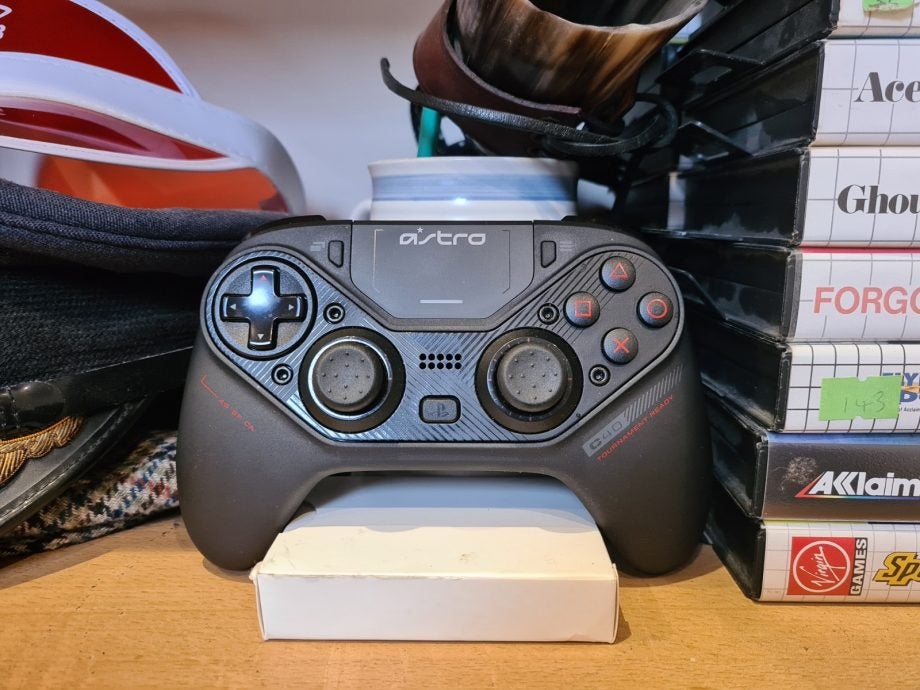
Verdict
The Astro C40 is an undeniably expensive luxury, but its stellar customisation options, ergonomic design and top-notch wireless performance justify its hefty price tag.
Pros
- Superb levels of customisation
- Comfortable, ergonomic design
- Stable wireless connectivity
- Great battery life
Cons
- Software can be buggy
- Very, very, very expensive
Key Specifications
- Review Price: £189.99
- RF Transmitter: 2.4Ghz Wireless
- Latency: 5ms
- Battery Type: Lithium Ion Rechargeable
- Audio: 3.5mm Jack
- Data/Power - Micro USB
- Weight: 310g
- Dimensions L:168 mm W:108 mm H: 53mm
- PS4/PC compatibility
The Astro C40 is the latest in a growing wave of professional-grade controllers targeting the growing esports market.
It aims to take on top dog competition such as the Razer Raiju and Xbox Elite Controller by offering gamers unprecedented levels of hardware and software customisability.
While the software is a bit temperamental on PC and its price tag is eye wateringly high, those after a best-in-class pad to help take your competitive gaming to the next level will struggle to do better than the Astro C40.
Related: Best PS4 games
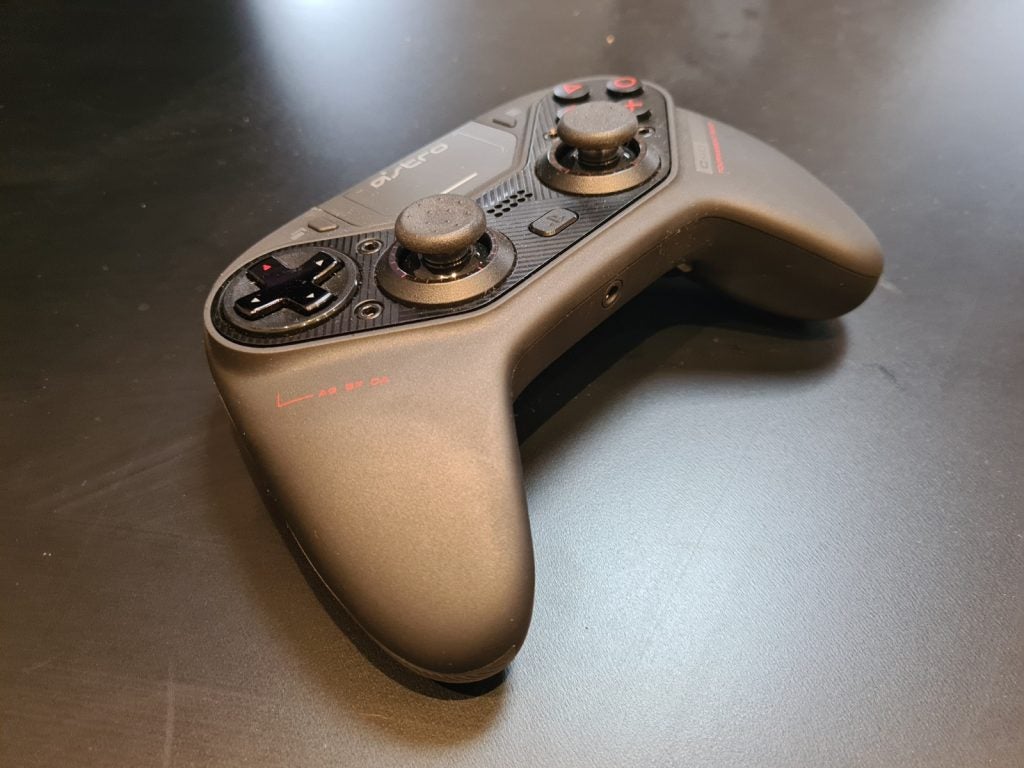
Design – An answer to the Xbox Elite controller
The Astro C40 is designed to work with PC and PS4. As a result, its button layout is tailored to Sony’s console, not Microsoft’s out of the box. But that doesn’t stop it having a completely unique look and feel to competing controllers with the same layout, like the Razer Raiju Ultimate Edition.
For starters the controller’s slightly smaller, featuring 168 x 108 x 53mm dimensions. This makes it feel much more like the regular DualShock 4 than its Razer competition.
But, like all esports pads, the controller features extra trigger inputs on its back. You’ll also see neat red switches, which can be used to adjust the actuation point of the pad’s triggers – like the ones seen on the Razer Wolverine and Raiju Ultimate.
If the feature set sounds familiar, it should. Pretty much every esports controller has a similar feature set. And if you’re just going to use it as it is out of the box, there’s little to justify why you’d pay so much, especially when the Xbox Elite 2 and Razer Raiju Tournament are both noticeably cheaper, retailing at £169.99 and £149.99 respectively.
However, if you’re a power user, or plan to use it on PC, there are a number of key perks that help justify the Astro C40’s increased asking price. The biggest from a design perspective is its more elegant and robust customisation system. Pretty much every esports controller lets you swap out things like the controller’s joysticks and d-pad, and the Astro is no exception.
Out of the box you’ll be treated to a choice of two standard domed caps, plus one tall concave and one tall domed cap. Online you can also purchase a disk module to replace the d-pad. These options are standard, but what makes them stand above their Razer competition, is the use of a screw, not magnetic swap out mechanism.
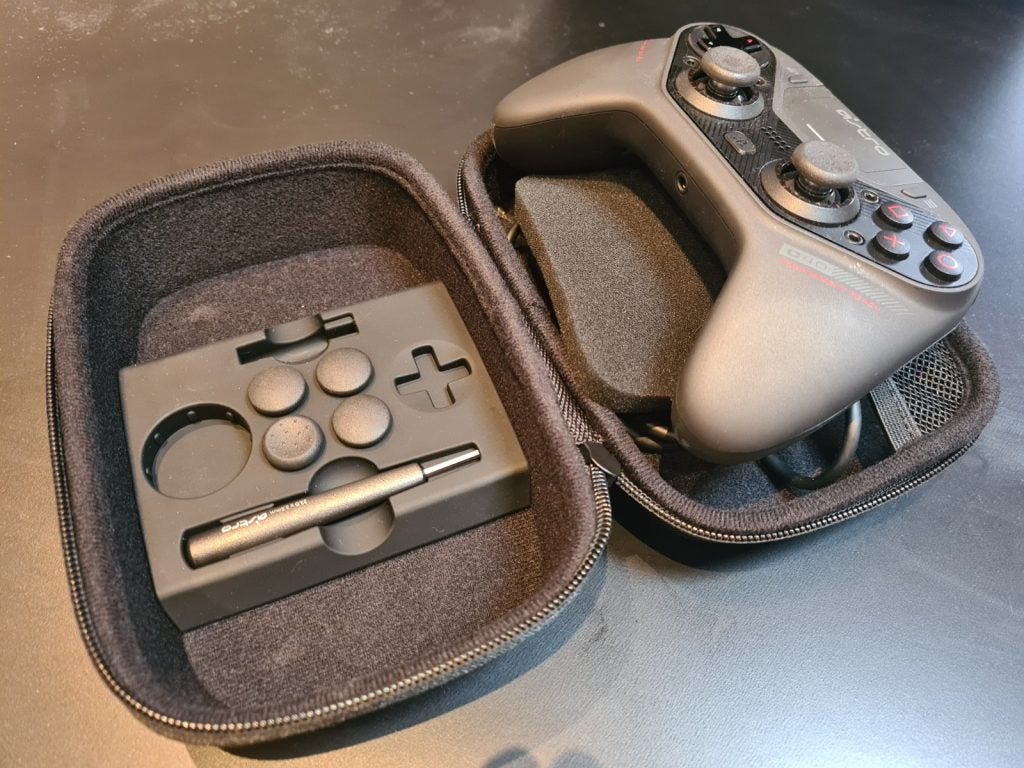
The Razer Raiju’s magnetic customisation system – which lets you change which caps you use just by pulling the old ones off and slotting the new ones in – is great for speed and convenience. But with long-term use, the mechanism has some shortcomings. The docking mechanism can loosen over time, leading to inaccuracies.
Which is why I prefer the C40’s, Elite-like, screw system. Here you have to manually remove a plate from the front of the controller. This can be done with most correctly sized screwdrivers, though the controller includes an “upgrade” tool out of the box. From there, you have to remove and replace the parts you want to tweak and re-attach the plate. The system is more fiddly, but it leads to improved build quality and makes the controller feel significantly more sturdy and slightly more accurate than its magnetic competition.
The system also has one amazing feature you won’t find on competing pads – you can swap the locations of the joysticks and D-pad. This means the Astro C40 is one of the only pads around that can be customised to have the same joystick/d-pad arrangement as both the Xbox One and Playstation controllers.
My only minor quibble is that the left front button inputs switches aren’t quite as tactile and responsive as the ones seen on the Razer Raiju Ultimate. Though they’re still a cut above the slightly spongy inputs you’ll get on regular Dualshocks, so this is hardly a deal-breaker.
Related: Best gaming headset
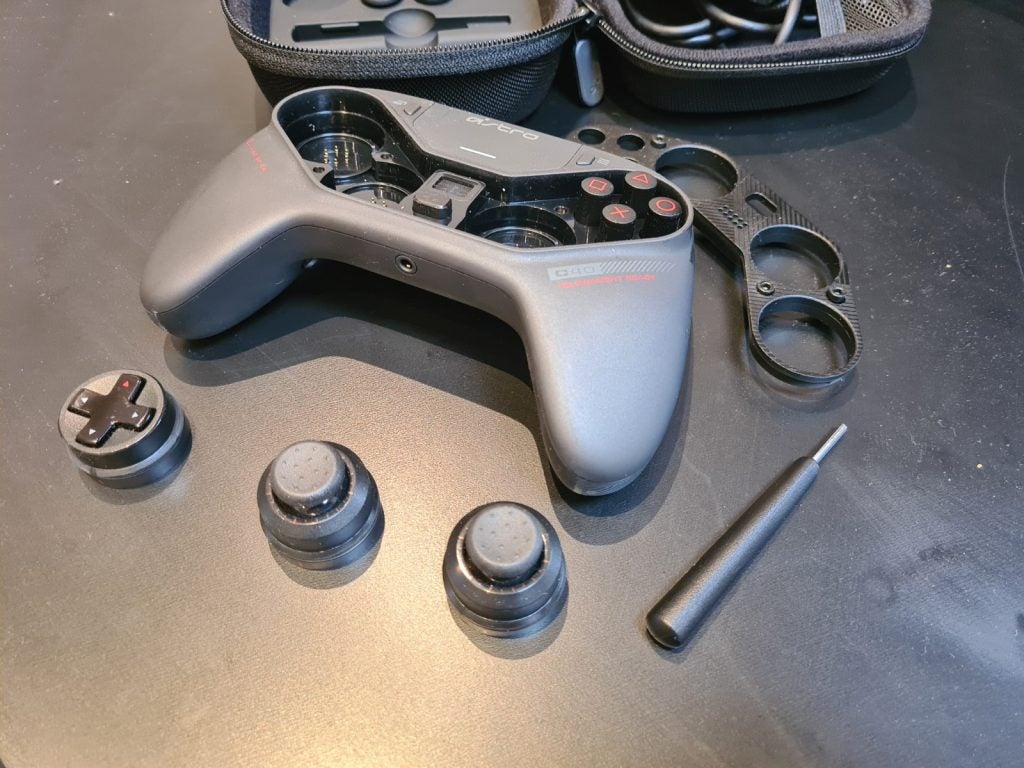
Software – great when it works
The improved tweakability extends to the C40’s button mapping. Using the controller on PC, you’ll be asked to download Astro’s controller configuration software, which does pretty much exactly what it says on the tin.
It lets you remap and adjust critical things like sensitivity on pretty much every one of the controller’s inputs. As an added perk the controller can store two configurations locally, so you won’t have to start from scratch if you connect it to a second PC.
The software features a great UI that makes remapping a trivial matter and is the best experience I’ve had since the Steam Controller – though that comes with its own performance issues I won’t discuss here.
The only downside is that the software doesn’t work with the PS4 and at times can be incredibly buggy. For reasons I still can’t explain, the software wouldn’t recognise the C40 on some of the PCs I tested it on.
On more than a few occasions, it would simply start and say no controller was connected, even when the C40 was connected to a USB 2.0 port, using the included micro-USB cable. The issue is particularly annoying as it means the PC won’t recognise the controller at all when gaming.
The only workaround I found was to go into the PC’s system settings and manually force the machine to view the C40 as an Xbox 360 remote. This meant it would work for gaming, but the configuration software still wouldn’t recognise it, removing one of the key reasons you’d want it.
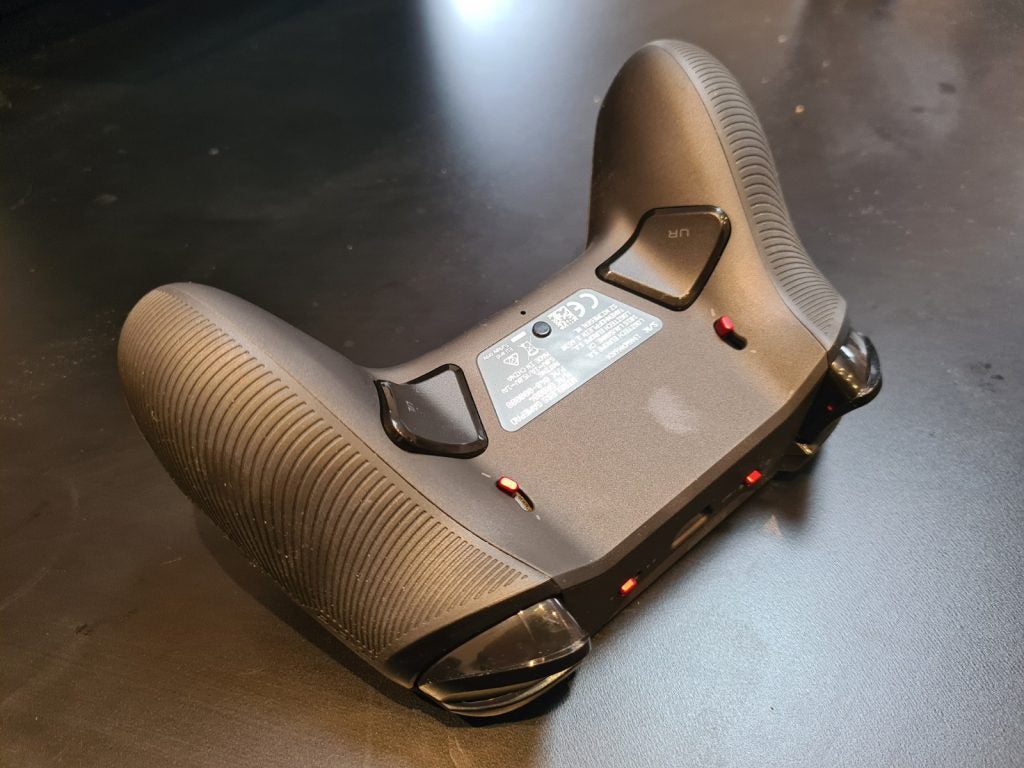
Connectivity and battery – reliable wireless and tournament stamina
Thankfully that was pretty much the only issue I had with the C40. The controller features the same wired and wireless connectivity as the Razer Raiju and Xbox Elite 2. But the inclusion of a 2.4GHz dongle for PC makes connection stability noticeably better than Razer’s Bluetooth connectivity. To date, I’m yet to experience any latency using the controller, even when gaming wirelessly.
I also found Astro’s quoted 12-hour battery life is, for the most part, accurate, which means even the most avid of gamers should be able to get a full day’s use out of it before having to recharge.
Related: Best PC games
Should you buy the Astro C40?
If you’re a casual PS4 gamer, then no. You should not buy the Astro C40, even if you have the cash to burn. With pricing set at nearly £200, the Astro C40 is complete overkill for anyone but the most competitive and hardcore of gamers.
But, if you’re a budding esports athlete or a hardcore gamer looking for a new gamepad, you’ll struggle to do better than the Astro C40. The controller offers unparalleled customisability and is one of the best built pads I’ve tested, even in the top end peripherals market. This, plus its stellar wireless connectivity and comfortable, ergonomic design make it one of the best gamepads on the market.


